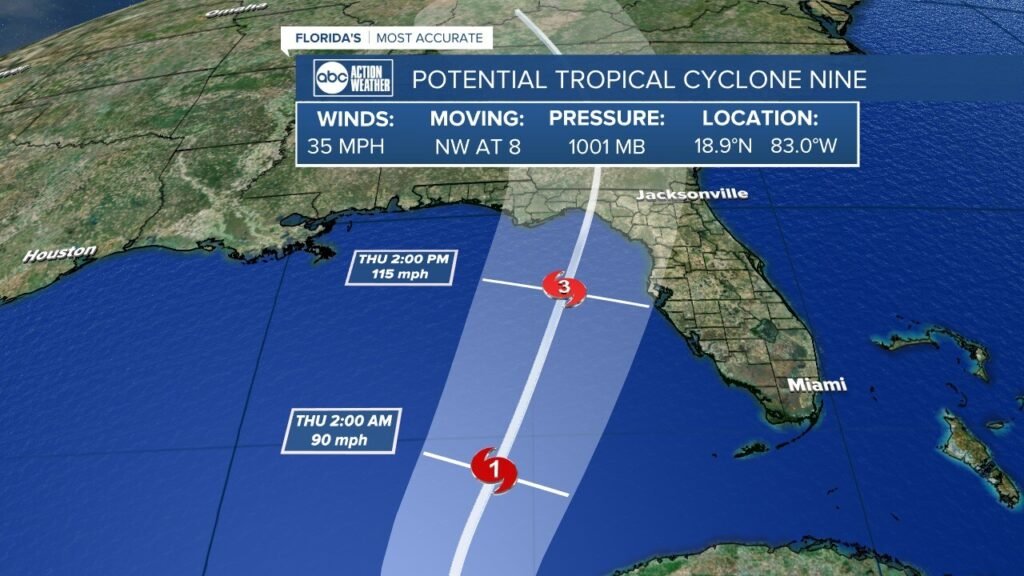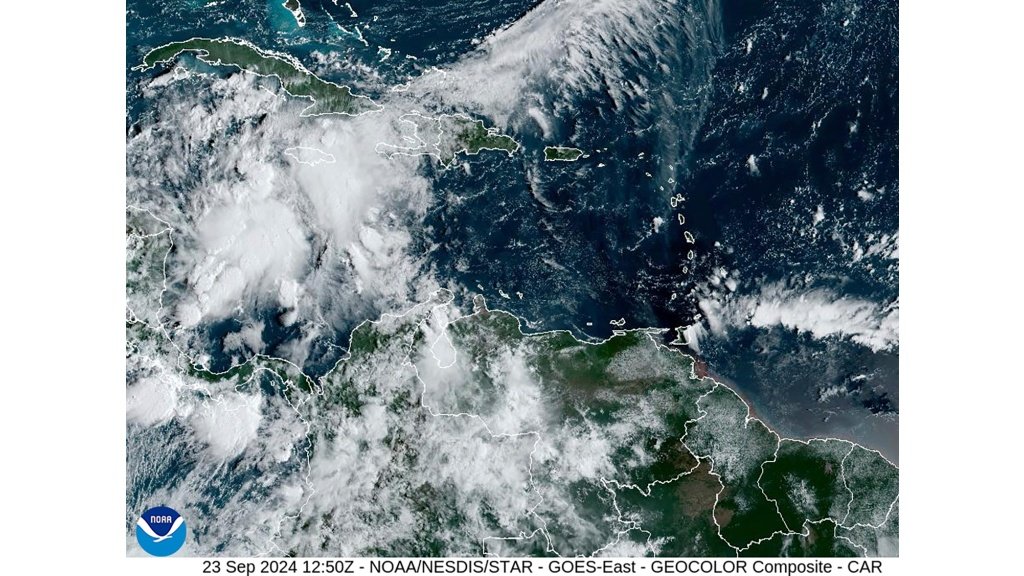A hurricane watch is a public announcement made by meteorological authorities when there’s a possibility that a hurricane could affect a particular area within the next 48 hours. The main goal of a hurricane watch is to alert people about the potential danger so they can start preparing for the storm. It’s like nature’s yellow flag, signaling that while the storm isn’t imminent, the potential is real.
But what’s the difference between a hurricane watch and a hurricane warning? A hurricane warning means that hurricane conditions are expected within 36 hours. A watch, on the other hand, serves as an early heads-up.
The Importance of a Hurricane Watch
Why should you care about a hurricane watch? Well, these early alerts provide vital time to prepare and secure your home, stock up on essential supplies, or even evacuate if necessary. During hurricane season, staying informed is not just wise—it can save your life. Even though a watch doesn’t mean a hurricane will definitely strike, the possibility is high enough that it requires attention.
How Hurricane Watches Are Issued
Hurricane watches are not pulled out of thin air. They are based on a series of meteorological factors that suggest a storm is forming and may impact land.

Meteorological Conditions for a Hurricane Watch
Experts analyze wind speeds, pressure systems, and sea surface temperatures to determine the potential for hurricane development. A storm must meet specific criteria in terms of wind strength—typically between 74 mph and 95 mph for Category 1 hurricanes.
Tools and Technology Used to Monitor Hurricanes
Modern technology plays a critical role in predicting hurricanes. Satellites, aircraft reconnaissance, and computer modeling are all used to monitor storms. This data helps meteorologists issue a hurricane watch well in advance.
Preparing for a Hurricane Watch
So, you’ve just heard that a hurricane watch has been issued—what now?
Stocking Up on Essentials
Make sure you have enough food, water, and supplies to last at least 3-7 days. Don’t forget batteries, flashlights, and any necessary medications.
Securing Your Home and Property
Check that windows and doors are storm-proof. Move outdoor furniture inside and make sure your yard is clear of objects that could become projectiles in strong winds.
Evacuation Plans and Routes
Have a clear evacuation plan in place. Know the best routes to take and where the nearest shelters are located. It’s always better to be over-prepared than under-prepared.
Hurricane Categories and Their Impact
Understanding hurricane categories is crucial for knowing how to respond when a watch is issued.
Overview of Hurricane Categories (1-5)
- Category 1: Wind speeds between 74-95 mph; minimal damage
- Category 2: Wind speeds between 96-110 mph; moderate damage
- Category 3: Wind speeds between 111-129 mph; devastating damage
- Category 4: Wind speeds between 130-156 mph; catastrophic damage
- Category 5: Wind speeds above 157 mph; total destruction possible
What Each Category Means for People in the Watch Zone
For those living in areas under a hurricane watch, the category of the storm will determine the level of action required. While a Category 1 hurricane might only require minor preparation, anything above a Category 3 should prompt serious action, including evacuation.

Difference Between a Hurricane Watch and Warning
Defining a Hurricane Watch
A hurricane watch signals that conditions are favorable for a hurricane to impact an area within the next 48 hours. It’s time to start taking precautionary measures.
Defining a Hurricane Warning
A hurricane warning, on the other hand, means a hurricane is expected within 36 hours, and immediate action is required.
How Long Does a Hurricane Watch Last?
Time Frames of Hurricane Watches
A hurricane watch typically lasts for up to 48 hours, giving residents ample time to prepare for the storm. Meteorologists will continue monitoring the storm, updating the watch status as the situation evolves.
Transition from a Watch to a Warning
If the storm intensifies and is expected to make landfall, the watch is upgraded to a hurricane warning, signaling that the time for preparation is almost over, and people should be ready to either shelter in place or evacuate.
What to Do During a Hurricane Watch
Staying Updated with Local Authorities
Constantly monitor your local news stations or weather apps for updates. Hurricanes can change course quickly, so staying informed is key.
Communication with Family and Friends
Stay in touch with loved ones. Make sure everyone knows the plan and can execute it swiftly if necessary.
Preparing an Emergency Kit
Your emergency kit should include essential items like non-perishable food, water, first-aid supplies, flashlights, and important documents.
Staying Safe During a Hurricane Watch
Monitoring Weather Updates
While it’s tempting to go about your day normally, pay close attention to official reports. A watch could be upgraded to a warning at any moment.
Knowing When to Evacuate
Evacuation orders might not be issued until a hurricane warning, but don’t wait until the last minute. If you’re in a high-risk area, consider leaving early to avoid traffic or dangerous conditions.
Common Myths About Hurricane Watches
Misconceptions Surrounding Hurricane Watches
One common myth is that a hurricane watch means a hurricane will definitely strike. This isn’t true. A watch only indicates that conditions are favorable for a hurricane to develop.
Why It’s Important to Trust Official Information
With so much misinformation online, it’s crucial to rely on official sources like the National Weather Service. Don’t let myths cloud your judgment.
Historical Impact of Hurricanes
Notable Hurricanes in History
From Hurricane Katrina to Hurricane Harvey, past storms have left a lasting impact on affected regions. These hurricanes serve as a reminder of the destruction that powerful storms can cause.
Lessons Learned from Past Hurricanes
One of the most significant lessons is the importance of early preparation. Many lives can be saved by heeding hurricane watches and taking proactive steps to secure homes and evacuate if necessary.
Hurricanes and Climate Change
The Increasing Intensity of Hurricanes
Climate change is leading to warmer ocean temperatures, which fuel more intense hurricanes. Over time, we may see an increase in Category 4 and 5 storms.
How Climate Change Affects Hurricane Patterns
With shifting weather patterns, storms are becoming less predictable, making it all the more critical to pay attention to hurricane watches and warnings.
Importance of Local Government and Emergency Services
Role of Local Authorities During a Hurricane Watch
Local governments are instrumental in issuing evacuation orders and providing shelters. Without their coordination, many people would be left without guidance.
Community Efforts to Ensure Safety
Communities often come together during hurricane watches to help each other prepare. Neighborhood check-ins and volunteer efforts can make a significant difference.
The Aftermath of a Hurricane
Dealing with the Destruction
The aftermath of a hurricane can be devastating, with widespread damage to homes, businesses, and infrastructure. Cleanup and recovery efforts often take months or even years.
Rebuilding and Recovery Efforts
While rebuilding can be daunting, many communities bounce back stronger than before. Government aid, insurance, and local relief efforts all play a role in helping people recover from the storm.
Conclusion
In conclusion, a hurricane watch is an essential early warning system that allows people in potentially affected areas to prepare for an approaching storm. Whether it’s stocking up on essentials, securing your home, or making evacuation plans, the steps you take during a hurricane watch can make all the difference. With climate change leading to more intense storms, staying informed and taking action during a hurricane watch is more important than ever.
FAQs
What should I do when a hurricane watch is issued?
When a hurricane watch is issued, begin preparing by stocking up on essentials, securing your home, and planning an evacuation route.
How often are hurricane watches issued?
Hurricane watches are issued several times a year, particularly during hurricane season, which runs from June to November.
Can hurricanes form unexpectedly?
While technology has improved, hurricanes can still form with less notice. That’s why it’s essential to stay updated, especially during hurricane season.
What’s the difference between a hurricane, a cyclone, and a typhoon?
The difference lies in the location. Hurricanes occur in the Atlantic and Northeast Pacific, cyclones in the South Pacific and Indian Ocean, and typhoons in the Northwest Pacific.
How long do hurricanes typically last?
Hurricanes can last anywhere from a few days to over a week, depending on their path and speed.

























